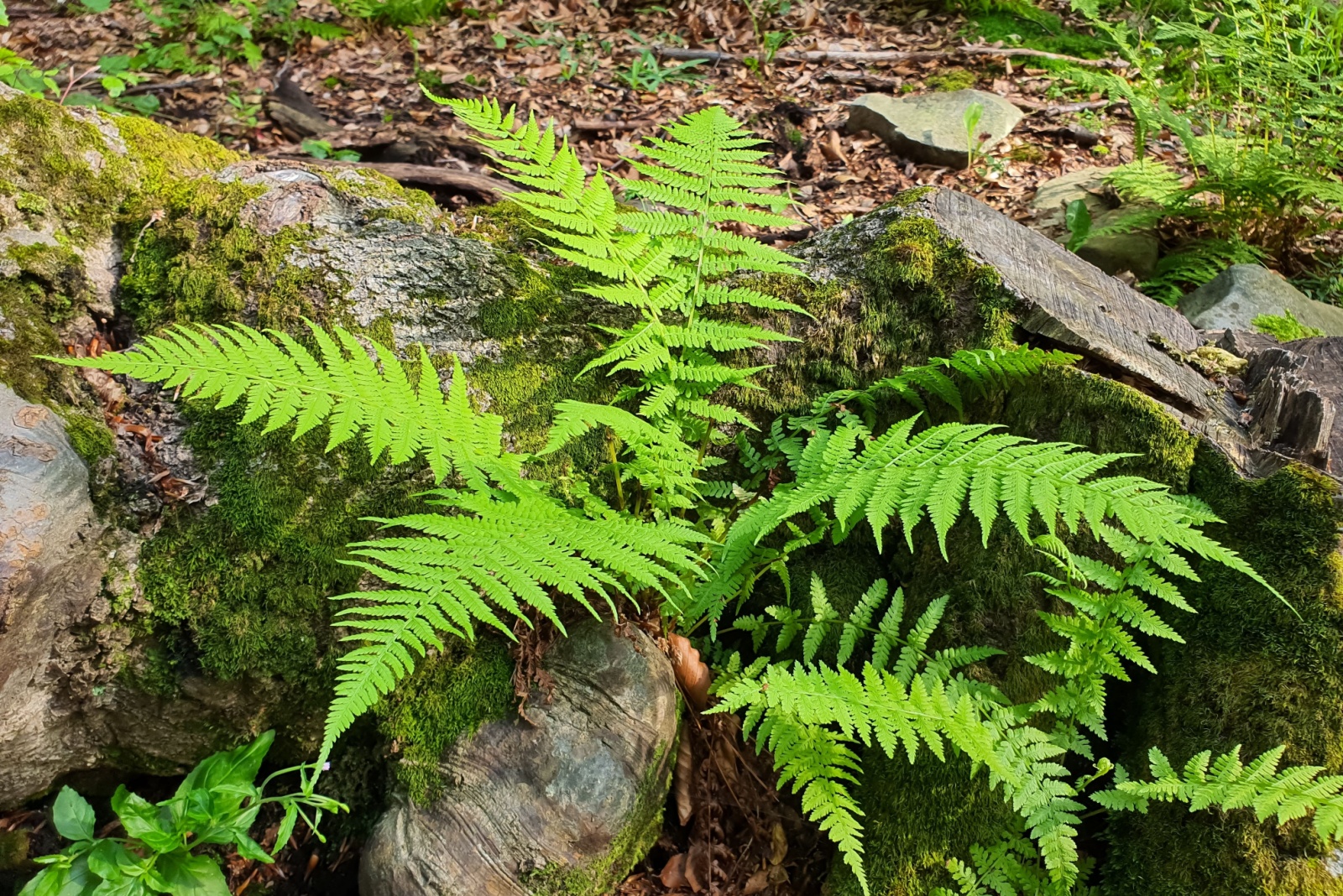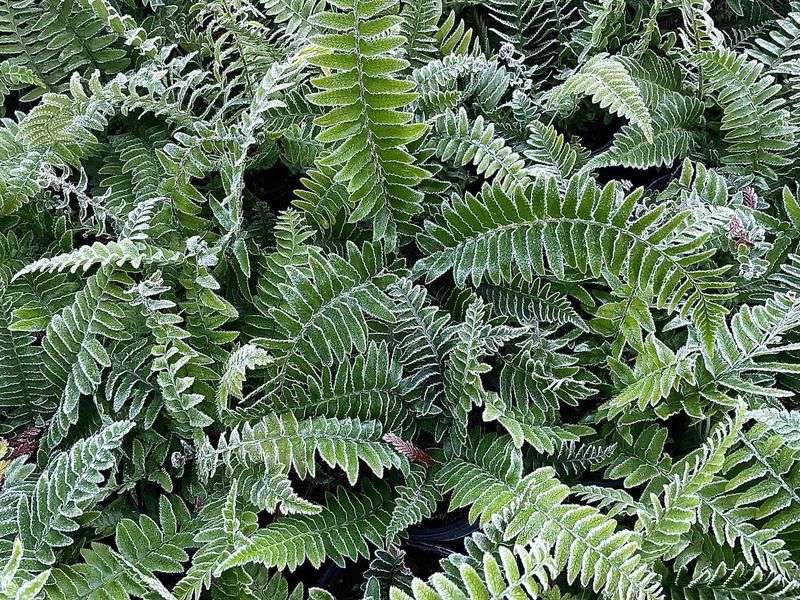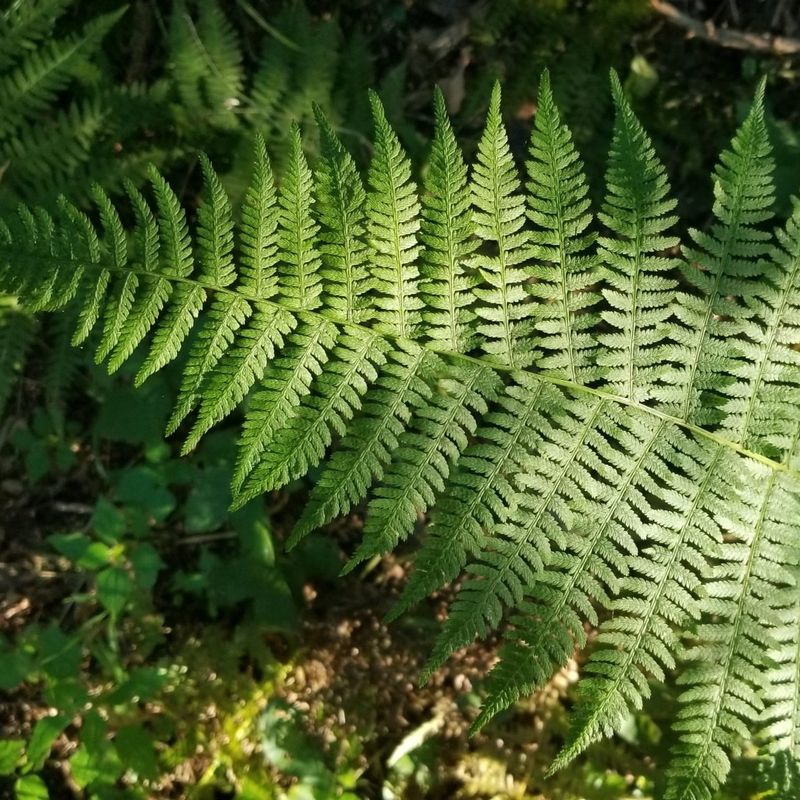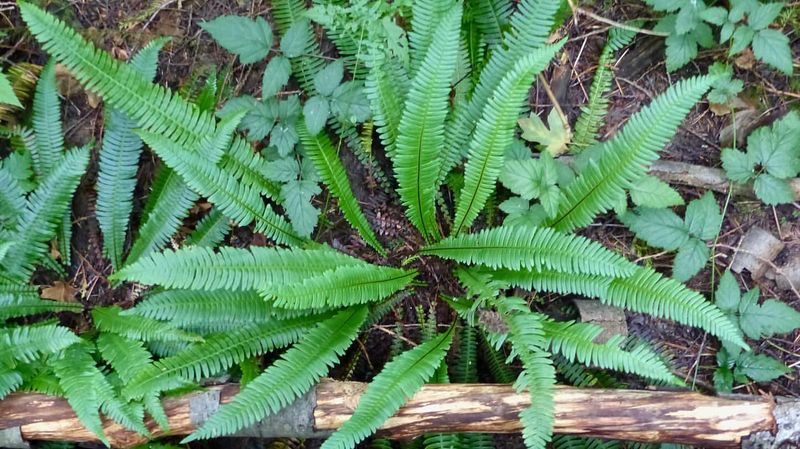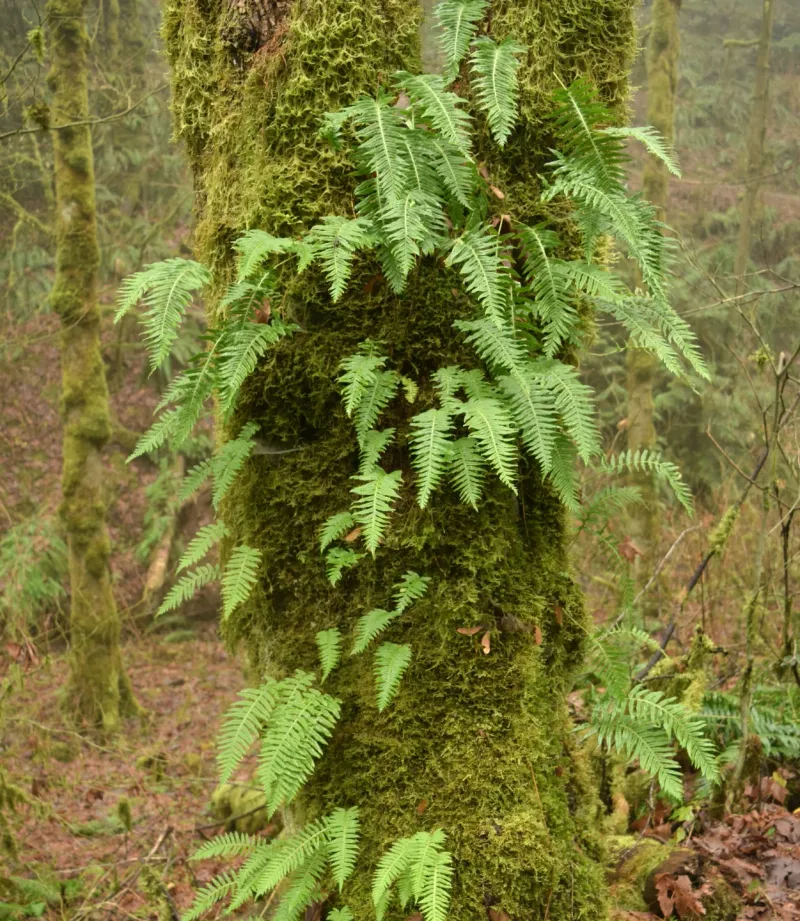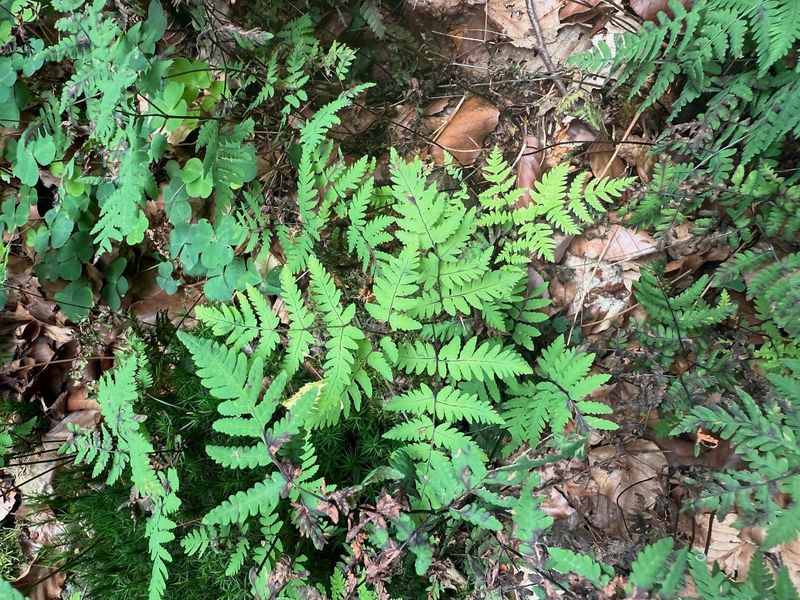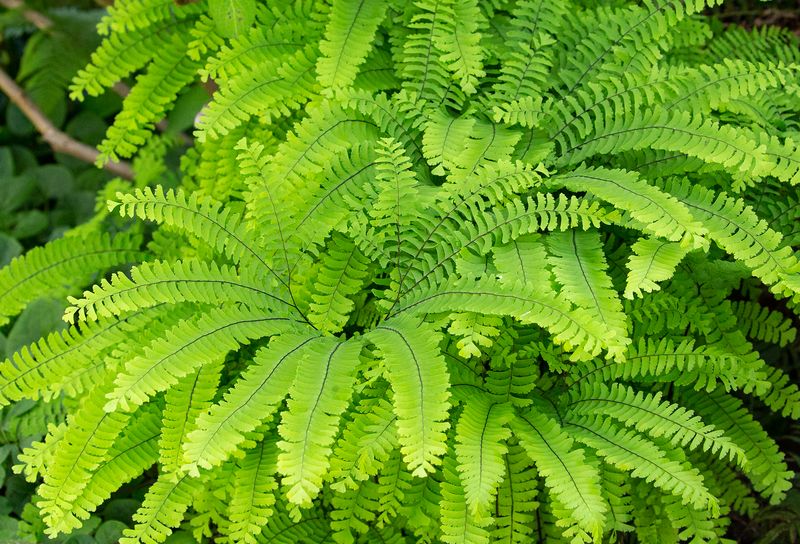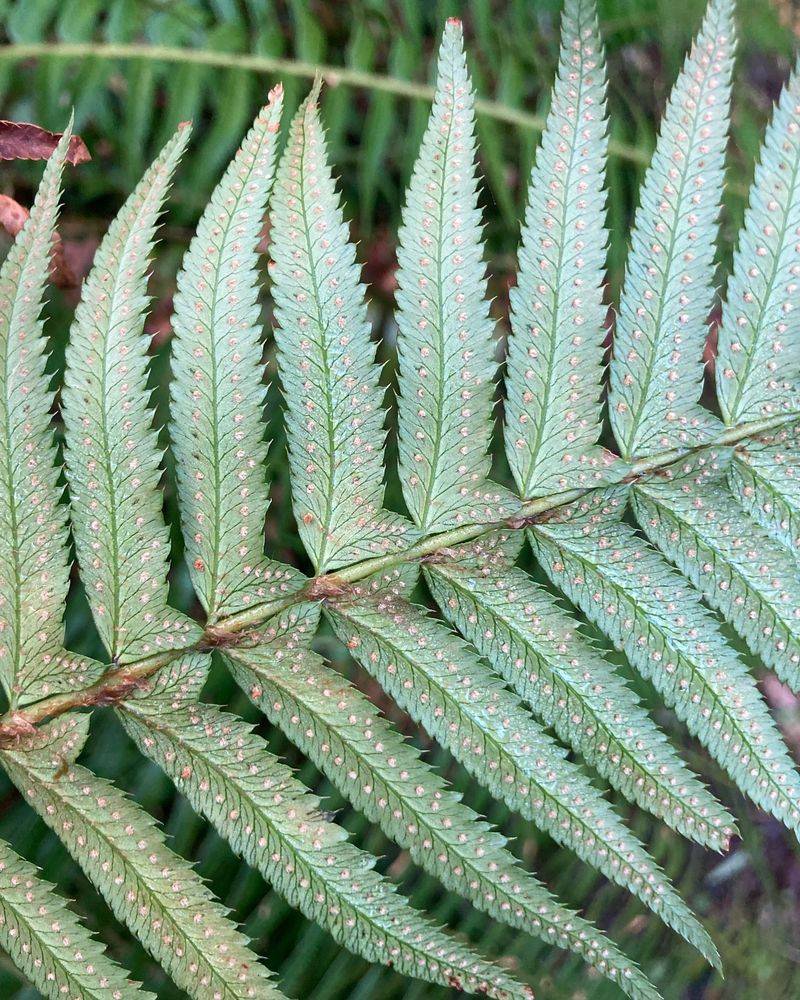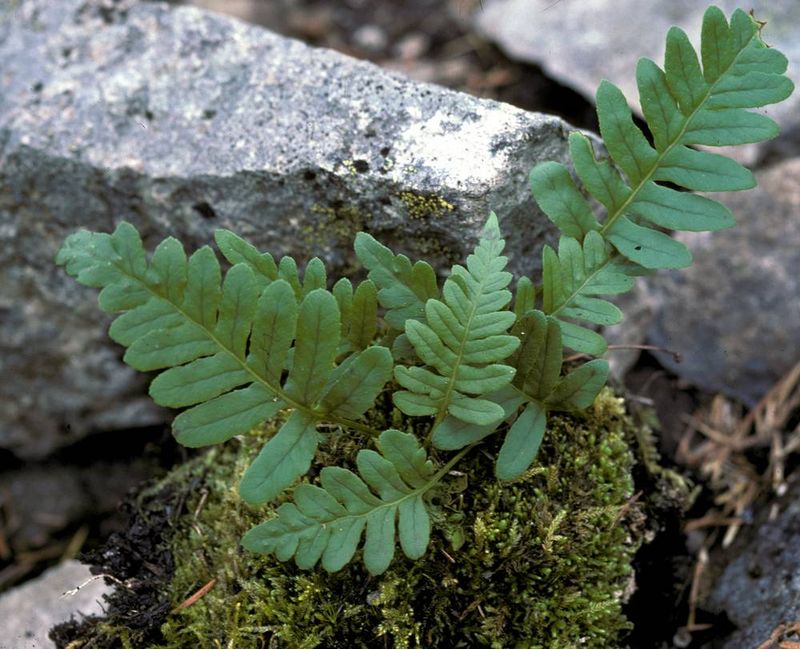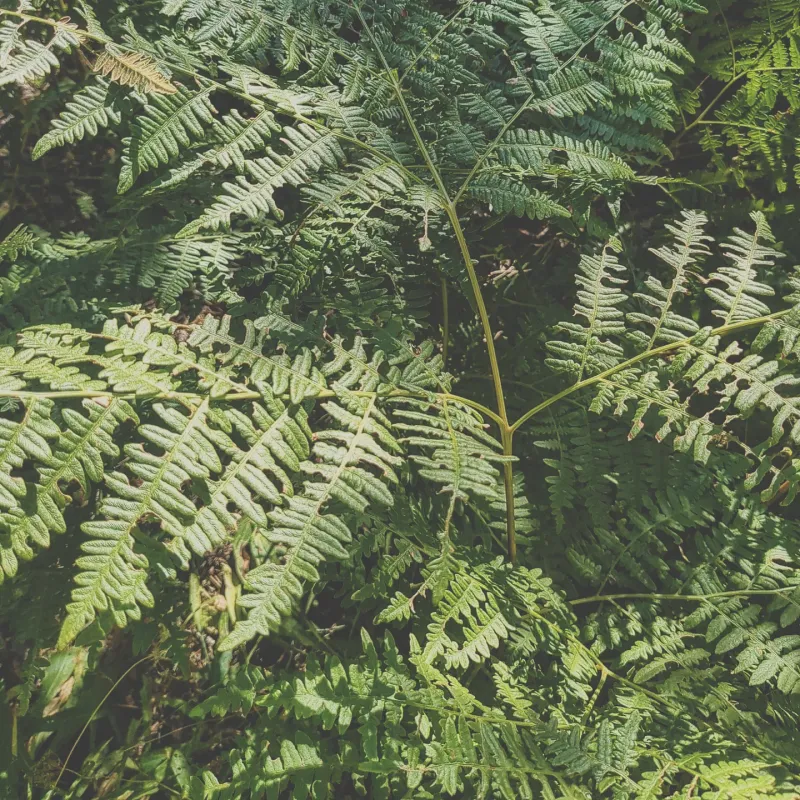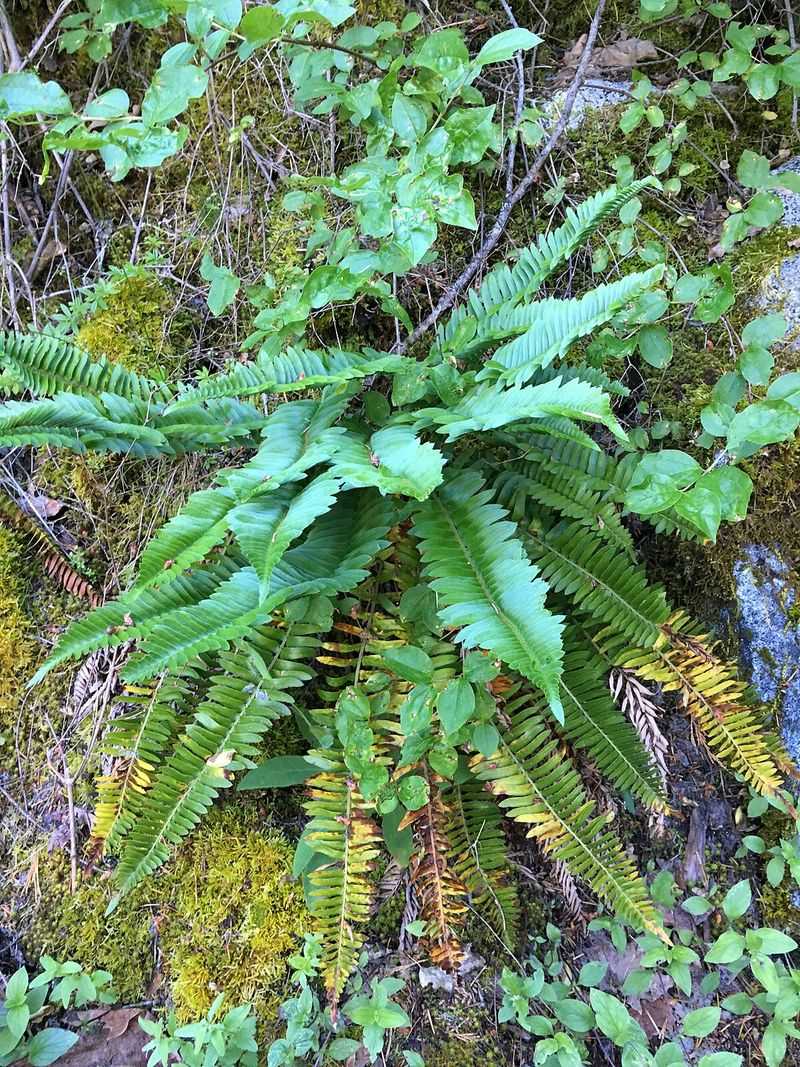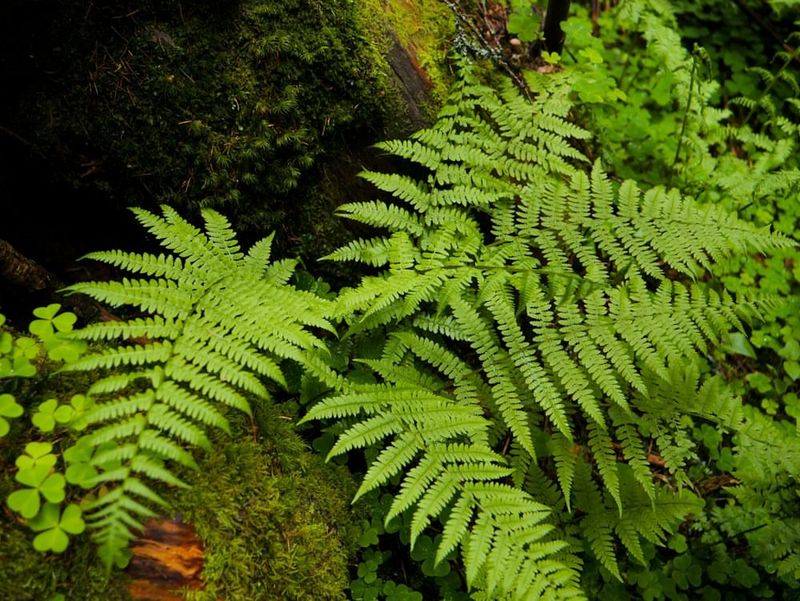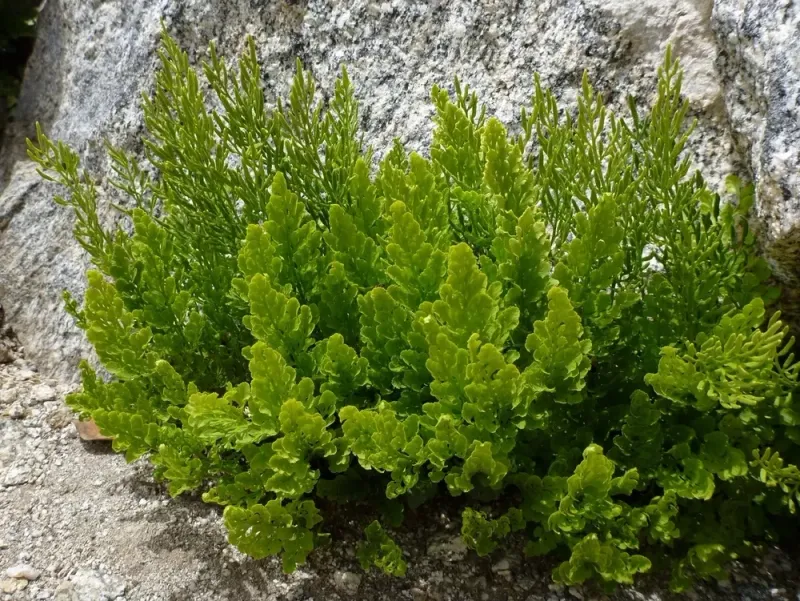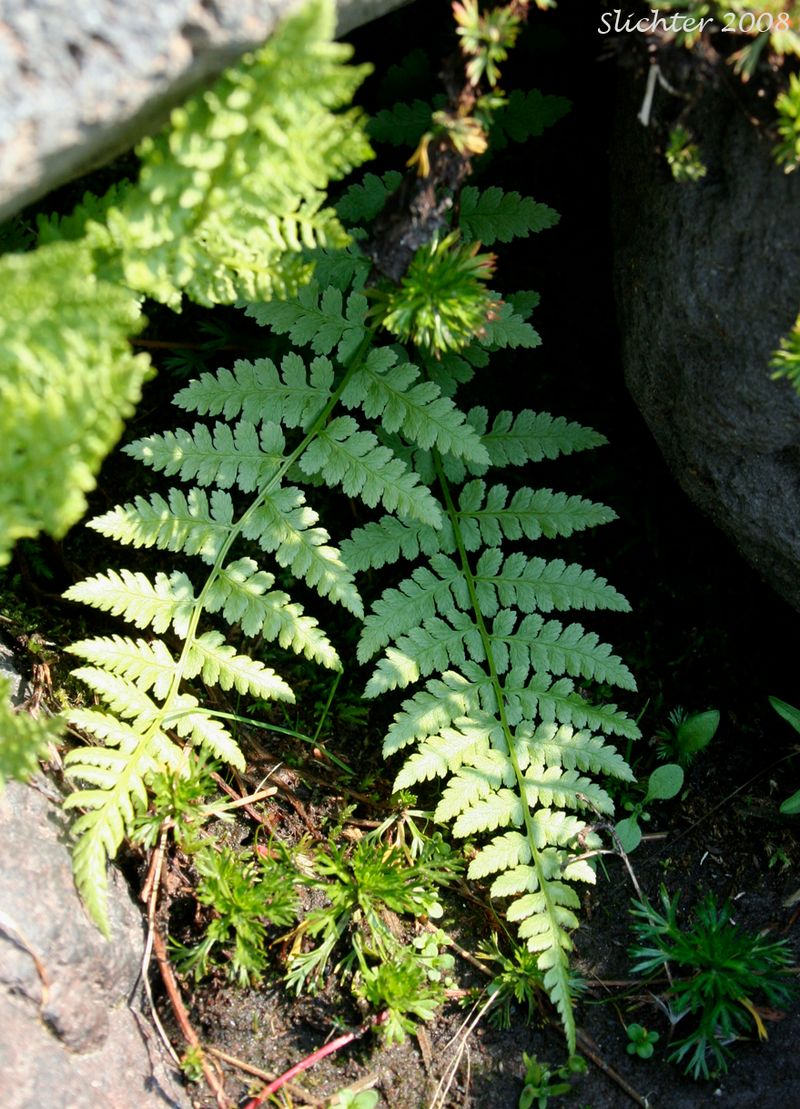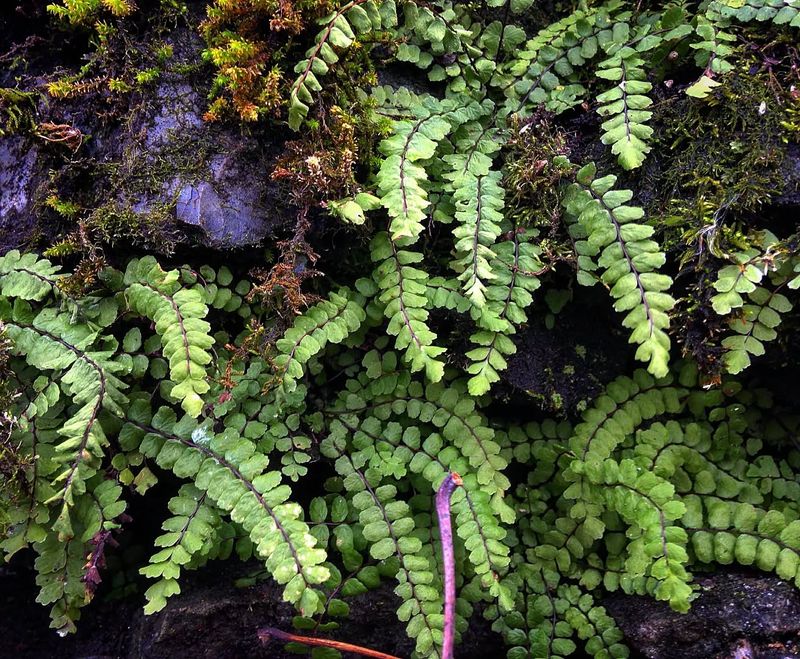The Pacific Northwest offers gardeners a unique climate where moisture and shade create perfect conditions for ferns to thrive. Our coastal rainforests and mountain valleys showcase these ancient plants in their full glory, making them iconic elements of our regional landscape.
While exotic ferns from Asia or Europe might catch your eye in garden centers, our native species have evolved over millennia to handle our specific growing conditions. They resist local pests, tolerate our seasonal patterns, and generally need less maintenance than their imported counterparts.
For me, walking through a stand of towering sword ferns on a misty morning trail feels like stepping into the region’s heart. These native ferns aren’t just plants – they’re living connections to the Northwest’s wild spirit and natural heritage.
1. Sword Fern (Polystichum munitum)
Hardy and robust, this evergreen fern creates a strong foundation for woodland gardens. The leathery fronds stay green year-round, offering reliable structure when other plants go dormant.
Many imported ferns collapse under our winter rains, but sword ferns stand tall. Their distinctive upright growth pattern forms a natural ground-level architecture that exotic species rarely match.
I’ve found they thrive in spots where nothing else grows, even in dry shade under massive Douglas firs where imported ferns quickly wither away.
2. Lady Fern (Athyrium filix-femina)
Delicate yet surprisingly tough, lady ferns bring graceful texture to shady spots. The bright green fronds form perfect vase-shaped clumps that complement other woodland plants.
Unlike fussy Asian varieties, lady ferns bounce back quickly after our occasional summer dry spells. Their lacy appearance belies their adaptability to both wet and temporarily dry conditions.
My garden’s lady ferns have outperformed imported Japanese painted ferns, requiring less water and spreading more reliably without becoming invasive.
3. Deer Fern (Blechnum spicant)
Featuring two distinct frond types, deer ferns offer year-round visual interest. The evergreen sterile fronds spread horizontally while fertile fronds stand upright in the center.
This architectural quality makes them more interesting than many one-dimensional exotic ferns. The contrast between the two frond types creates natural drama even in deep shade.
Despite their delicate appearance, deer ferns handle our region’s temperature swings with ease, maintaining their good looks when imported varieties turn brown at the first frost.
4. Maidenhair Fern (Adiantum aleuticum)
Our native maidenhair fern displays fan-shaped fronds with distinctive black stems that create striking contrast. The delicate leaflets appear to float in the air, adding lightness to shady corners.
While exotic maidenhairs often struggle with our cool nights, the western maidenhair evolved here and thrives in our climate. They naturally grow along seeping cliffs and stream banks throughout the region.
Last summer, my eastern maidenhair import withered in the heat while the native species remained fresh and green with minimal care.
5. Licorice Fern (Polypodium glycyrrhiza)
Growing naturally on moss-covered trees and rocks, licorice ferns bring a touch of wild forest magic to gardens. Their rhizomes actually taste like licorice and were used by Native Americans for sore throats.
These adaptable ferns go dormant during summer drought, then spring back to life with fall rains. This natural cycle makes them perfect for our regional rainfall patterns.
Try mounting them on a mossy log in a shady corner – they’ll outperform any exotic epiphytic fern with their natural adaptation to our wet-dry seasonal shifts.
6. Oak Fern (Gymnocarpium dryopteris)
Soft, triangular fronds spread to form delicate ground covers in woodland settings. The light yellow-green color brightens shady areas better than many darker exotic alternatives.
Oak ferns naturally fill forest gaps after disturbance, making them perfect for garden renewal projects. Their rhizomes gently spread to create unified drifts without becoming aggressive.
A friend replaced her struggling Japanese holly fern with our native oak fern, and the transformation was remarkable – from struggling specimen to thriving colony in just one season.
7. Western Maidenhair Fern (Adiantum pedatum)
Horseshoe-shaped fronds spread horizontally with remarkable symmetry, creating a distinctive silhouette unlike any exotic variety. The black stems contrast beautifully with bright green leaflets.
These ferns excel in rain gardens and along water features where imported varieties often rot. Their natural resilience to seasonal flooding makes them ideal for problem areas.
My western maidenhairs have flourished for years in spots where Japanese painted ferns repeatedly failed, proving that native adaptation beats exotic appeal in real-world garden conditions.
8. Chain Fern (Woodwardia fimbriata)
Reaching impressive heights of up to six feet, giant chain ferns create dramatic vertical elements in shade gardens. The fronds display distinctive chain-like patterns along their undersides.
Unlike many large exotic ferns that need constant moisture, chain ferns handle our summer dry periods with surprising resilience. They’re particularly effective as specimen plants where height is needed.
After seeing these giants growing wild along Olympic Peninsula streams, I added them to my garden where they now tower over imported Japanese ferns that never reached even half their size.
9. Western Polypody (Polypodium hesperium)
Naturally growing on rocks and tree trunks, western polypody brings vertical interest to garden walls and stone features. The leathery evergreen fronds have distinctive rounded lobes.
These tough little ferns survive in crevices where exotic rock garden ferns quickly perish. They’ve evolved to handle the extreme conditions of exposed rocky habitats throughout our region.
The golden dots of spore cases visible on mature fronds add unexpected visual interest during winter months when many imported ferns look bedraggled.
10. Bracken Fern (Pteridium aquilinum)
Standing tall with distinctive triangular fronds, bracken creates natural screens in larger gardens. Their seasonal growth and die-back cycle fits perfectly with our regional rhythms.
Though sometimes considered too vigorous, bracken’s spreading habit makes it perfect for naturalizing large areas where maintenance is limited. No imported fern can match its ability to stabilize disturbed soils.
The rich golden-brown color of autumn bracken brings seasonal change to gardens in a way that evergreen exotic imports never can.
11. Narrowleaf Swordfern (Polystichum imbricans)
Adapted to drier conditions than most ferns, the narrowleaf swordfern thrives in challenging woodland edges. The compact, upright form fits perfectly in smaller gardens or containers.
The dark, glossy fronds maintain better appearance during dry spells than imported alternatives. Their natural drought tolerance eliminates the constant watering many exotic ferns demand.
Several of these have survived in my garden’s driest corner for years without supplemental water, while nearby Japanese holly ferns needed constant attention and still struggled.
12. Spiny Wood Fern (Dryopteris expansa)
Semi-evergreen with lacy, triangular fronds, spiny wood fern offers delicate texture in woodland gardens. The fresh green color lights up shady corners from spring through late fall.
These adaptable ferns handle both wet winter soils and moderate summer dryness better than similar-looking exotic species. Their natural habitat ranges from coastal forests to mountain slopes throughout our region.
Last year’s unusual cold snap damaged my imported autumn ferns while nearby native wood ferns emerged unscathed in spring, demonstrating their superior cold hardiness.
13. Parsley Fern (Cryptogramma acrostichoides)
Perfectly suited for rock gardens, parsley fern forms tight clumps of distinctive dimorphic fronds. The sterile fronds resemble parsley while fertile fronds stand more upright with specialized spore-bearing structures.
This alpine native handles exposed conditions that would quickly kill most exotic rock garden ferns. Its natural adaptation to snowpack and summer drought makes it exceptionally resilient.
Adding these to my rock wall created year-round interest in a spot where imported maidenhair spleenwort repeatedly failed despite numerous attempts.
14. Alpine Lady Fern (Athyrium distentifolium)
Thriving in mountain environments, alpine lady fern handles cold temperatures that would kill many exotic species. The compact growth habit makes it perfect for smaller gardens with limited space.
Despite its delicate appearance, this fern evolved in harsh subalpine conditions across our region. The bright green fronds emerge later than lowland species but persist well into fall.
My alpine lady ferns have consistently outperformed similar-looking Japanese imports, especially during unexpected late spring frosts that damaged the exotic varieties.
15. Maidenhair Spleenwort (Asplenium trichomanes)
Tiny but tough, maidenhair spleenwort grows naturally in rock crevices throughout our region. The delicate fronds with round leaflets arranged along black stems create miniature works of art in rock gardens.
Unlike fussy exotic small ferns, our native spleenwort handles the freeze-thaw cycles of Northwest winters with ease. Its diminutive size makes it perfect for troughs and containers.
The evergreen fronds maintain their perfect form through winter, providing garden interest when many imported ferns have collapsed into brown mush.

